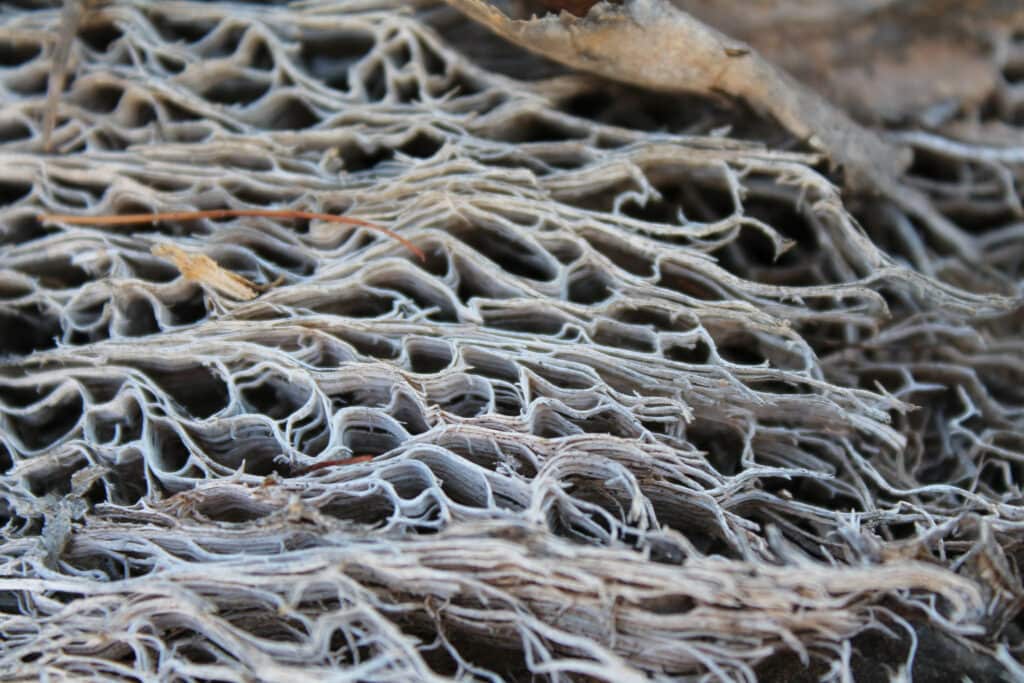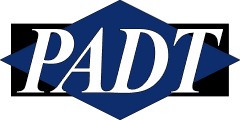Results Presented by PADT’s Academic Partners to the symposium “Best practices for bioinspired design education, research and product development’’
PADT has been working with our academic partners on a series of NASA-funded STTRs on the use of bio-inspired designs for better mechanical geometry. In the last paper, PADT’s Alex Grishin, PhD, talked about simulation and test work done on honeycomb geometries. In this paper, he joins biologists from the team to discuss the importance of biodiversity when looking at bioinspired designs.
The paper was written by:
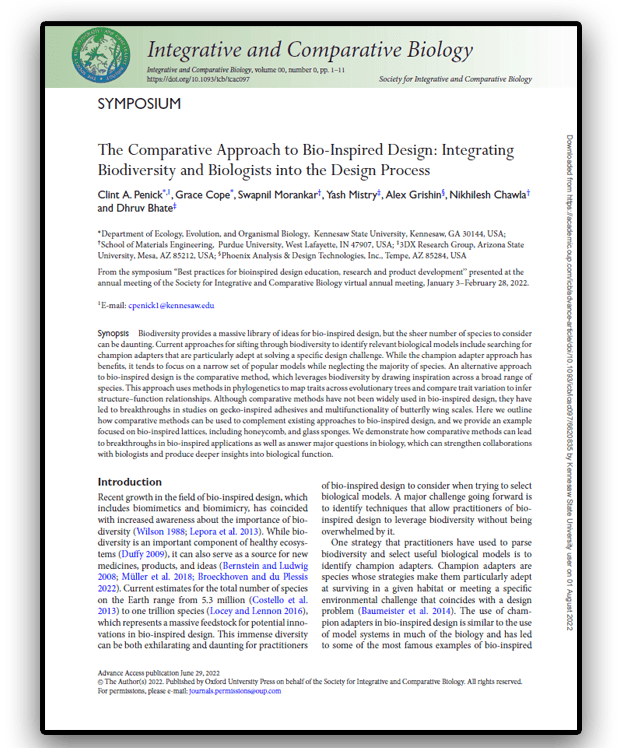
- Clint A. Penick – Department of Ecology, Evolution, and Organismal Biology, Kennesaw State University
- Grace Cope – Department of Ecology, Evolution, and Organismal Biology, Kennesaw State
- Swapnil Morankar – School of Materials Engineering, Purdue University
- Yash Mistry – 3DX Research Group, Arizona State University
- Alex Grishin – PADT, Inc
- Nikhilesh Chawla – School of Materials Engineering, Purdue University
- Dhruv Bhate (PI) -3DX Research Group, Arizona State University
The paper was presented in the symposium “Best practices for bioinspired design education, research and product development’’ presented at the annual meeting of the Society for Integrative and Comparative Biology virtual annual meeting, January 3–February 28, 2022. The paper was published in “Integrative & Comparative Biology” on June 29, 2022.
You can read the abstract and the whole article if you are a subscriber here.
Here is the Synopsis from the paper:
Biodiversity provides a massive library of ideas for bio-inspired design, but the sheer number of species to consider can be daunting. Current approaches for sifting through biodiversity to identify relevant biological models include searching for champion adapters that are particularly adept at solving a specific design challenge. While the champion adapter approach has benefits, it tends to focus on a narrow set of popular models while neglecting the majority of species. An alternative approach to bio-inspired design is the comparative method, which leverages biodiversity by drawing inspiration across a broad range of species. This approach uses methods in phylogenetics to map traits across evolutionary trees and compare trait variation to infer structure–function relationships. Although comparative methods have not been widely used in bio-inspired design, they have led to breakthroughs in studies on gecko-inspired adhesives and multifunctionality of butterfly wing scales. Here we outline how comparative methods can be used to complement existing approaches to bio-inspired design, and we provide an example focused on bio-inspired lattices, including honeycomb, and glass sponges. We demonstrate how comparativemethods can lead to breakthroughs in bio-inspired applications as well as answer major questions in biology, which can strengthen collaborations with biologists and produce deeper insights into biological function.
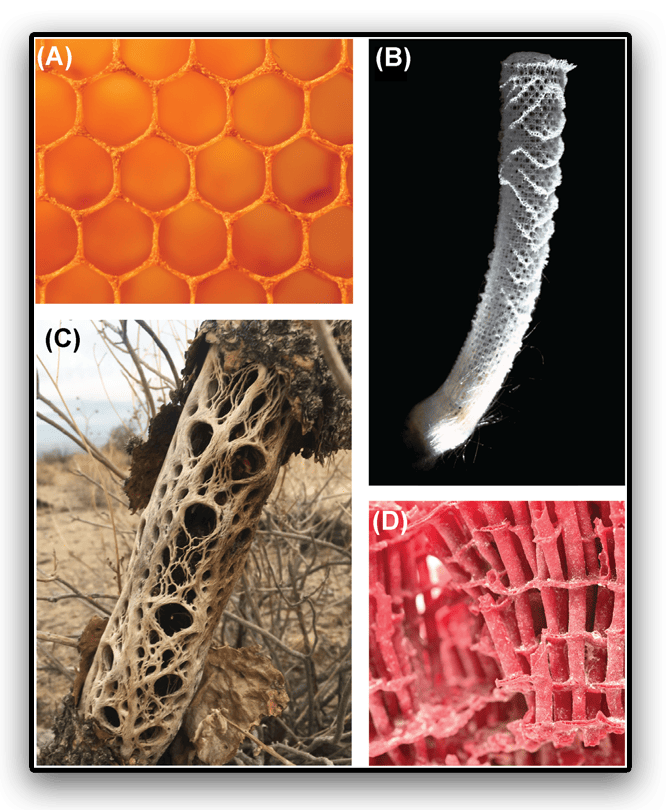
Dr. Grishin worked with ASU Professor Dhruv Bhate, PhD, and a variety of students over the course of the study. This project came out of a PHASE1 STTR that was followed by two more STTR efforts:
- Phase II STTR: “Aperiodic Lattice Design Optimization for Multi-Functional Lightweight Aerospace Structures“
- With Arizona State University (ASU) and Kennesaw State University (KSU)
- Phase III STTR: “Thermo-Fluid and Structural Design Optimization for Thermal Management“
- With Arizona State University (ASU) and Penn State University.
The Phase III study will is focused on developing a multiphysics optimization tool that, like nature, optimizes geometry for multiple loads applied via different physics – structural, thermal, vibration, and fluid flow.
We want to thank our academic partners and especially our supporters at NASA. The opportunity to use advanced technology like 3D Printing and Simulation along with traditional testing was a fantastic opportunity for students to explore biomimicry and understand the physics and math behind natural structures.
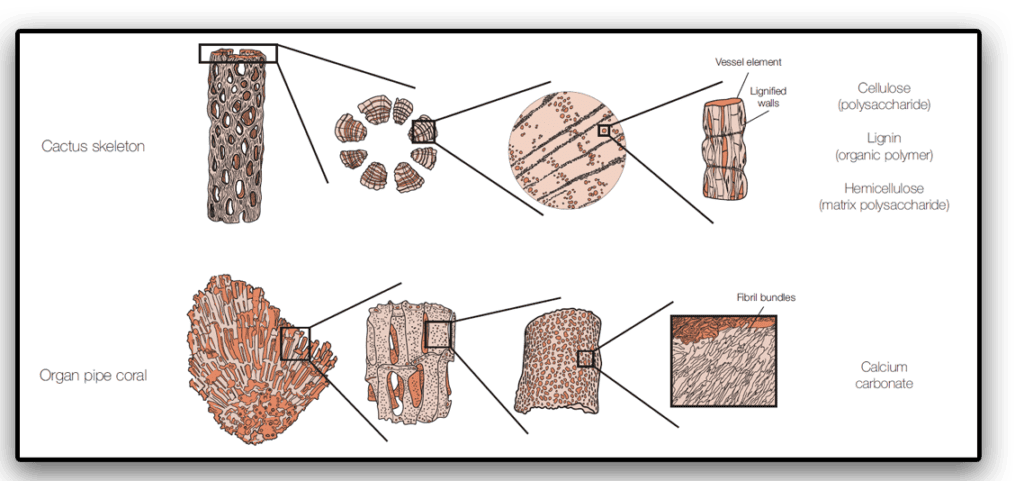
Combining 3D Printing and Simulation to Explore and Understand Bio-Inspired Design
This project is a great example of how PADT combines its three core technologies, Simulation, Design, and Additive Manufacturing, to help our partners and customers achieve their goals. In this situation, we aided in accomplishing meaningful and commercially useful research. How can we help your team meet your goals? Reach out, and let’s talk about it.
